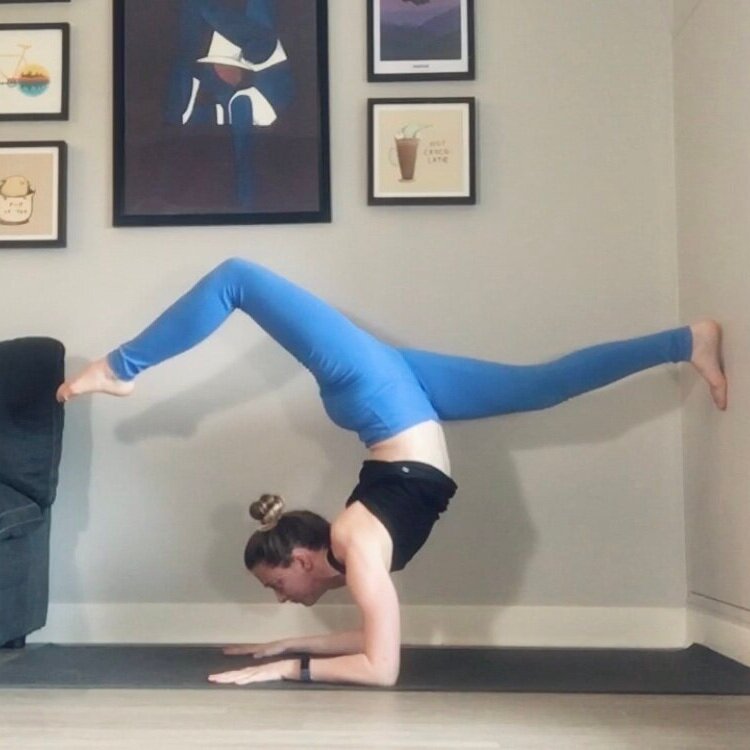How To: Wall-Supported Scorpion Forearmstands
How To: Wall-Supported Scorpion Forearmstands
As a follow-up to last week’s forearmstands for beginners post, here are a couple of “bendier” versions of wall-supported forearmstands that are fun to play with: a half-scorpion and full scorpion.
Since these poses recruit both your shoulders and back, make sure to start with a shoulder warm up and be sure to use proper backbending technique to help protect your low back in these controlled bends (engage your abs, breathe, all that good stuff!).
Wall-Supported Half Scorpion
In this pose we’ll keep one foot on the wall for balance, but start to introduce a controlled backbend. The end result: a half scorpion!
Start in your wall-supported forearmstand (see above), in an upside down “L” shape.
Lift one leg off of the wall, reaching up towards the ceiling - pausing here to make sure you feel balanced and supported in your forearms.
Start to reach the top leg’s toes forwards (bending the knee) as you bring a gentle bend into your back and lift you gaze towards your fingertips on the floor. That’s it - you’re doing the thing!
When you’re ready to dismount, bring the top foot back to the wall, and walk feet back down to the floor.
Wall-Supported Full Scorpion
Before trying this one, make sure you’re comfortable kicking up to a facing-the-wall forearmstand. If you can kick up and comfortably support your own weight, then you’re good to proceed!
Start facing the wall, hands and forearms planted one hands-length away from the wall.
Kick up into a forearmstand, resting both feet against the wall.
Initiate your backbend by lifting your gaze towards your fingertips, slightly dropping your chest, and letting your toes slide down the wall an inch or two.
Start to tip toe your feet down the wall as you bend your knees.
Once your feet are below knee height, you can experiment with trying to take one foot away from the wall, or both feet, trying to hover in a balance for a couple of seconds.
When you’re ready to come out, kick feet off of the wall back to the floor.
For an alternate version, give a wall-supported half scorpion (facing the wall) a try - that’s another fun one to play with your balance. Note: for the half scorpion, you’ll want to start with your hands a tad farther away from the wall than the full scorpion to give you more room to balance.
Wall-Supported Booty Drop Forearmstand
Start facing the wall, hands and forearms planted right next to the wall. For this one you can either keep your forearms parallel to each other, or you can bring fingertips to touch making an acute angle with your forearms. But whichever you choose, make sure elbows are shoulder-width apart.
Kick up into a forearmstand, resting both feet against the wall.
Initiate your backbend by drifting your butt towards the wall - let your knees bend, toes can slide down the wall, and let your butt start to fall toward the wall. This is a beautiful shape if you keep your toes pointed!
If you can bring your butt to touch the wall, then you can safely play with several leg variations:
Bent knees, legs together, pointed toes
Bent knees, one knee bent more than the other so knees end up at different heights
Straight legs, both legs pasted on the wall, pointed toes
One leg bent, one leg straight
Straight legs, legs crossed at ankles
Bent knees, legs crossed at knees/thighs
When you’re ready to exit, push feet into the wall to push your butt away, then kick down to the floor with control (it’s much easier to kick out if your butt isn’t stuck to the wall!)


